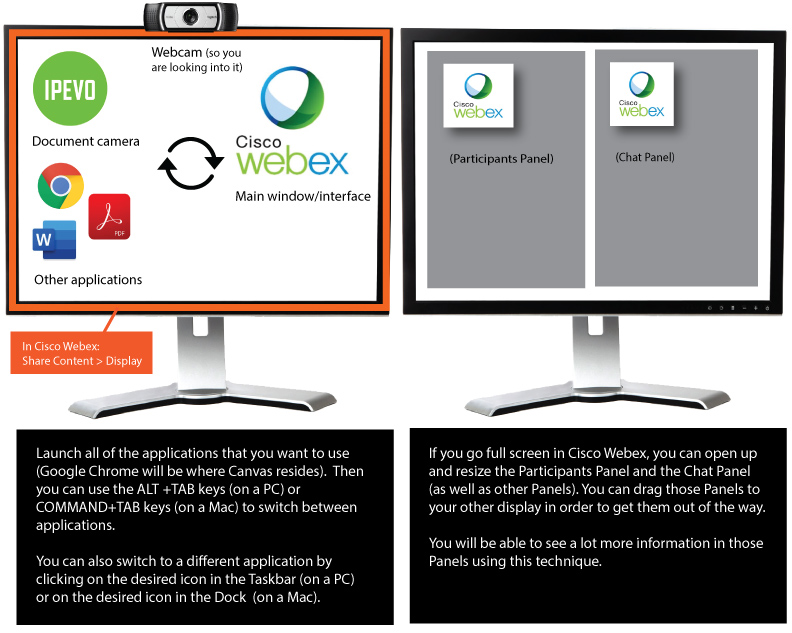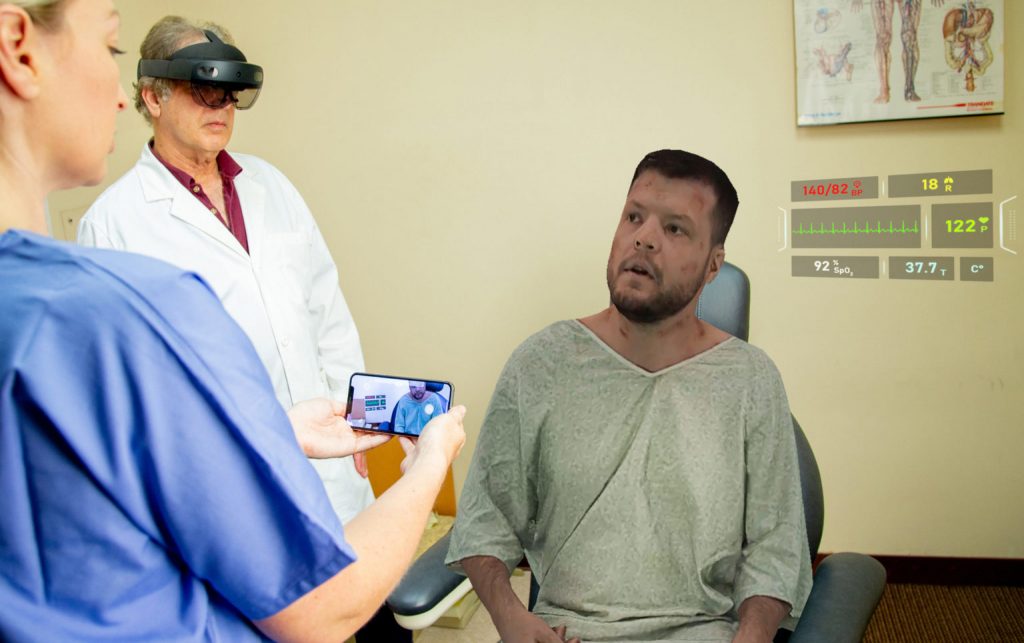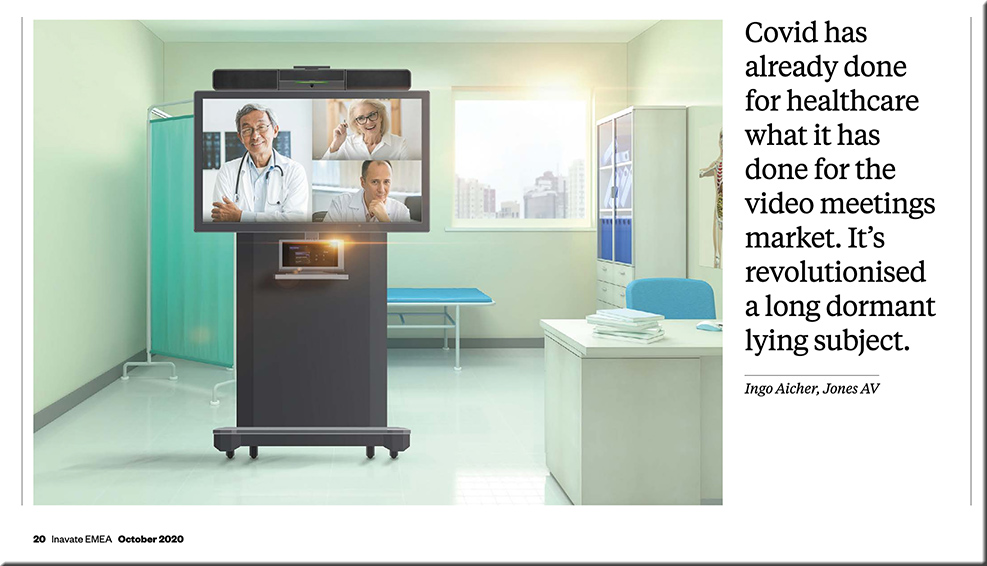How Can Schools Prepare for VR/AR Integration? https://t.co/X3FhkUPyfZ via @VRScout
— Daniel Christian (he/him/his) (@dchristian5) November 15, 2020




How Can Schools Prepare for VR/AR Integration? https://t.co/X3FhkUPyfZ via @VRScout
— Daniel Christian (he/him/his) (@dchristian5) November 15, 2020
How to Work Remotely as a Lawyer: A Guide — from clio.com by Teresa Matich; with thanks to Nelson Miller for this resource
Excerpt:
Whether you’ve looked at working remotely as a lawyer in the past (or as a paralegal, legal assistant, legal professional) with dreams of traveling the world, or whether you’re looking into it for the first time now, this guide contains clear, practical tips for opening a remote legal practice without interruption. We’ll cover:
From DSC:
Many people talk about engagement when they discuss learning, and with good reason. It seems to me that what they are really getting at is the topic of getting and maintaining someone’s *attention.* Attention is the gatekeeper to further learning. I wonder if some of the next generation learning platforms that employ some level of Artificial Intelligence (AI)-enabled features, will look to a learner’s preferences (as stored in their cloud-based learner’s profile) in order to help gain/maintain such attention.
And this also helps explain why allowing more learner agency — i.e., more choice, more control — in pursuing their own interests and passions really helps: A motivated learner is paying closer attention to what’s going on.


From DSC:
And along these lines, that’s one of the key reasons I’d like to see more involvement from the Theatre Departments, Computer Science Departments, and from those involved with creative writing across the land — in terms of helping develop content for remote and online-based education. Actors, actresses, set designers, costumer designers, audio/video editors, programmers/software developers, and more who could collaborate on these kinds of ideas.
Last comment on this. I don’t mean that we should present our classes like many advertisements do (i.e., running a thousand images by me within 30 seconds). But changing things up periodically — both visually and audibly — can help regain/reset your students’ attentions.
Virtual Reality: Realizing the Power of Experience, Excursion and Immersion in the Classroom — from nytimes.com
A framework for teaching with New York Times 360 V.R. videos, plus eight lesson plans for STEM and the humanities.
A Guide for Using NYT VR With Students
From DSC:
In our future learning experiences, I wonder what taking a break might look and sound like…? That is, we’re going along learning something from/with others (virtually/digitally) and then the teacher, professor, Subject Matter Expert (SME), trainer, or whoever says to take a break. What could happen then?
In the online/digital/virtual-based realm, that could mean that you have the option to set your “break” setting to bring up Spotify, or Vimeo, or YouTube, or Pandora, some VR-based app, other. The lights in your “learning space” could dim and the music could come on. Or you reach for a VR headset and watch a sunset or position yourself by a picturesque brook. Or your favorite podcast/vodcast picks up where you left off.
Hmmm…should be some interesting innovation and affordances along these lines.
Here is a helpful app to help teachers create green screen videos — from educatorstechnology.com
Excerpt:
If you are looking for a good green screen app to use in your teaching and with your students in class, Do Ink is definitely one of the first options you should consider. Green Screen by Do Ink allows you to easily create beautiful videos and visual presentations incorporating a wide variety of multimedia materials. As a teacher, you can use it to design tutorials, step-by-step guides, explainers, visual illustrations, presentations, posters, and many more.
Expert Tips for Using PowerPoint Presenter View (2 screens, Windows) in Zoom or Teams — from thinkoutsidetheslide.com; with thanks to Tamara Kravits for this resource
Except:
In this article I want to share some of the expert tips for using the features of Presenter View. I will use the common scenario of Presenter View showing on one screen while the slides show on a second screen which is shared in the meeting platform. This allows easy access to all the Presenter View features.
If you need to add a second screen, check out the options in this article and if you want to learn more about using Presenter View in different setups, I have complete guides to using Presenter View in Zoom and in Teams.
From DSC:
Along the lines of using two monitors with a videoconferencing application, below is a graphic I created for our faculty members at the WMU-Cooley Law School.

Also relevant/see:
From DSC:
When reading the abstract of the article/research entitled, “Does Telemedicine Reduce Emergency Room Congestion? Evidence from New York State,” I wondered again:
Will the growth of telemedicine/telehealth influence the growth of telelegal?
I think it will.
We show that, on average, telemedicine availability in the ER significantly reduces average patients’ length of stay (LOS), which is partially driven by the flexible resource allocation. Specifically, the adoption of telemedicine leads to a larger reduction in ER LOS when there is a demand surge or supply shortage.
Also see:
From DSC…by the way, another title for this blog could have been:
WIN-WIN situations all around! The Theatre Departments out there could collaborate with other depts/disciplines to develop highly engaging, digitally-based learning experiences!
The future of drama and the theatre — as well as opera, symphonies, and more — will likely include a significant virtual/digital component to them. While it’s too early to say that theatre needs to completely reinvent itself and move “the stage” completely online, below is an idea that creates a variety of WIN-WIN situations for actors, actresses, stage designers, digital audio/video editors, fine artists, graphic designers, programmers, writers, journalists, web designers, and many others as well — including the relevant faculty members!
A new world of creative, engaging, active learning could open up if those involved with the Theatre Department could work collaboratively with students/faculty members from other disciplines. And in the end, the learning experiences and content developed would be highly engaging — and perhaps even profitable for the institutions themselves!
Though the integration of acting with online-based learning materials is not a new idea, this post encourages a far more significant interdisciplinary collaboration between the Theatre Department and other departments/disciplines.
Consider a “Dealing with Bias in Journalism” type of topic, per a class in the Digital Media and Journalism Major.
Colleges and universities could share content with each other and/or charge others for their products/content/learning experiences. In the future, I could easily see a marketplace for buying and selling such engaging content. This could create a needed new source of revenue — especially given that those large auditoriums and theaters are likely not bringing in as much revenue as they typically do.
Colleges and universities could also try to reach out to local acting groups to get them involved and continue to create feeders into the world of work.
Other tags/categories could include:
Also see:
What improv taught me about failure: As a teacher and academic — from scholarlyteacher.com by Katharine Hubbard
In improv, the only way to “fail” is to overthink and not have fun, which reframed what failure was on a grand scale and made me start looking at academia through the same lens. What I learned about failure through improv comes back to those same two core concepts: have fun and stop overthinking.
…
Students are more engaged when the professor is having fun with the materials (Keller, Hoy, Goetz, & Frenzel, 2016), and teaching is more enjoyable when we are having fun ourselves.
Coursera Couple Returns to Higher Ed With $14.5M to Recreate In Person Learning, Online — from edsurge.com by Tony Wan
Apple announces 5G-capable iPhone 12 Pro with LiDAR-enhanced AR — from uploadvr.com by Ian Hamilton
Excerpt:
The new feature on the iPhone 12 Pro promises much improved AR features, like what’s pitched as helping improve photo quality as well as instantaneous placement of virtual content into your environment. It also may make 3D scanning of objects or places in the real world a more common practice.
Creating a split-screen music video – The Dos and Don’ts — from global-edtech.com by Levent Erdogan
Levent Erdogan shares his experience producing split-screen music videos.
NVIDIA Virtual Meetings AI Tech — from theawesomer.com
With the increased need for video calls these days, those with low-bandwidth connections may experience poor video quality. This tech being developed at NVIDIA dramatically reduces bandwidth needs by sending a fixed image, then using an AI-controlled avatar to track and replicate their facial movements in real-time.
Got science questions? Skype A Scientist can help — from bigthink.com by Scotty Hendricks
A non-profit dedicated to science communication offers to connect learners with over 11,000 scientists.
Fostering Student Creativity with Green-Screen Videos — from teachingprofessor.com by Jason Webb and Jeff Mangram
Excerpt:
Educators have come to realize that videos are highly effective and engaging ways to create online course content. One of the most engaging forms uses a green-screen backdrop to project images or videos behind or next to the speaker. Barbara Oakley used this technique in her famous course Learning How to Learn, where she brought in images to illustrate and amplify her message during course videos. Take a look at this example and consider the fact that Oakley shot the videos in her basement using only a couple hundred dollars’ worth of supplies. Today most colleges already have green-screen studios set up for marketing or other uses.


